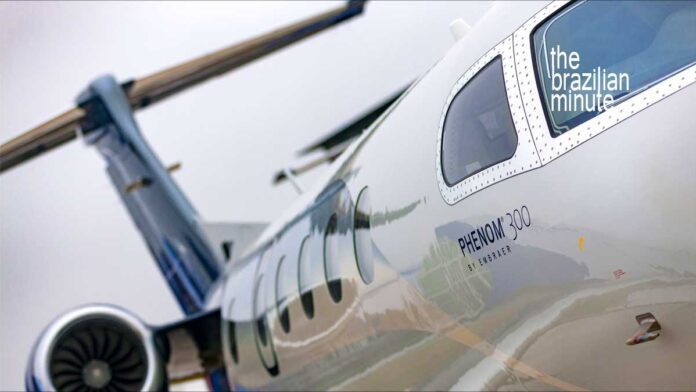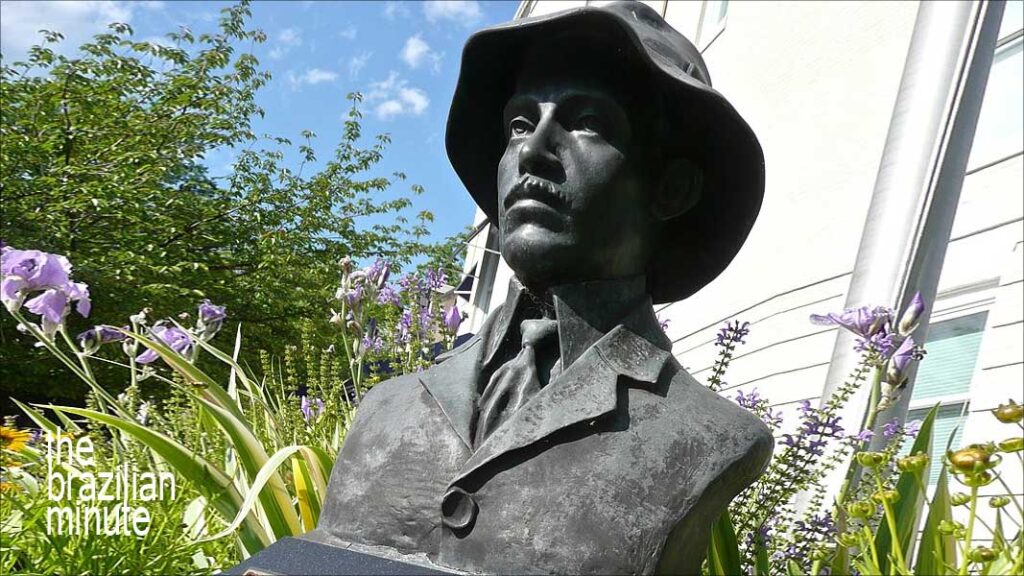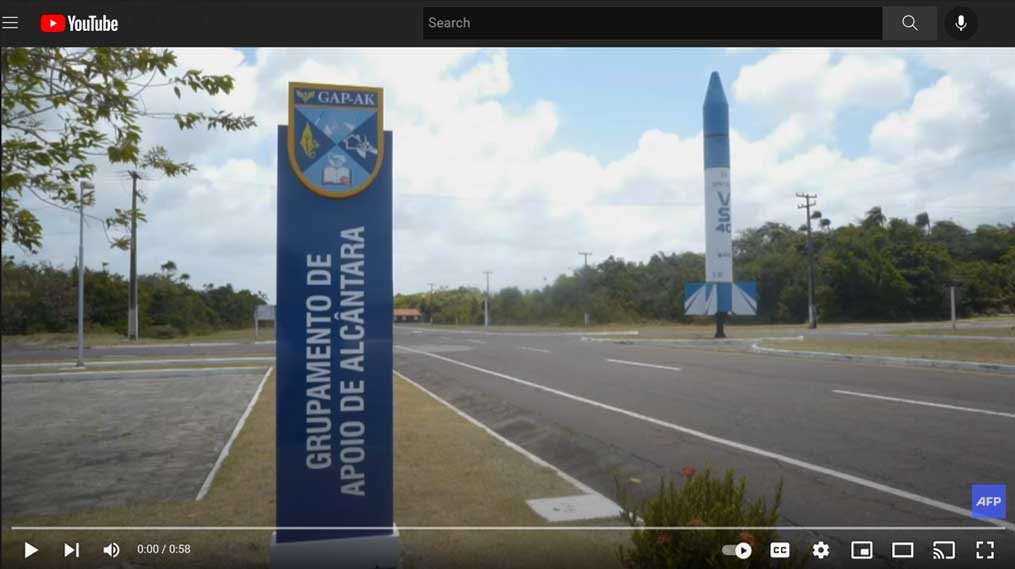
From First Flight To Brazil’s Constellations
Brazil’s Aerospace History begins with a story of vision, ambition, and the same ‘why not’ attitude that drives technology and progress today.
This series was presented by the Consulate-General of Brazil in Chicago and the Brazilian Foreign Ministry’s Cultural Department.
In celebration of Brazil’s Bicentennial year, 1822 – 2022
This week’s Brazilian Minute: Brazil’s Aerospace History
(Audio not available)
Catch up with other Brazilian Minute episodes you may have missed!
Script from Audio:
Brazil’s Aerospace Industry is South America’s largest, and its origin can be traced to a Brazilian visionary, Alberto Santos Dumont. In 1906, Santos Dumont successfully flew the world’s first airplane which could take off on its own power.
Today, Brazil’s Embraer is the world’s third-largest aerospace manufacturer of commercial passenger jets, flying on five continents and operated by more than 30 airlines.
Brazil launched its first satellite in 1993 and astronaut Marcos Pontes holds the honor of being the first Brazilian in space, having served on the International Space Station.
Brazil celebrates Aviator’s Day on October 23rd, the date of Santos Dumont’s historic flight. And here’s another interesting fact about Santos Dumont. Brazil’s ‘Father of Flight’ is the co-inventor of the wristwatch!
Read and listen to new weekly episodes of The Brazilian Minute.

More on: Brazil’s Aerospace History
Overview:
We all know that the Wright Brothers made their first flight at Kitty Hawk in 1903. Three years later, a young Brazilian aviator would make history on a Parisian airfield.
Alberto Santos Dumont is the pilot of the first airplane able to take off under its own power. The date? October 23, 1906.
Brazil’s Aerospace History: Aviator’s Day
This date is celebrated annually in Brazil as both Aviator’s Day and Brazilian Air Force Day. It commemorates the achievements of Santos Dumont and the birth of Brazil’s burgeoning Aerospace history.
Alberto Santos Dumont is a national hero in Brazil. Airports, schools, parks, and roadways bear his name.
A monolith stands at the site of his historic flight at Parc Bagatelle in Paris. You’ll find his impressive bronze bust on display at the Brazilian Embassy in Washington, D.C. Santos Dumont has a place of honor in Brasilia’s Tancredo Neves Pantheon of the Fatherland and Freedom.
He is the only Brazilian to have a lunar location carry his name. Perhaps his greatest honor comes from the Brazilian Space Agency’s Missão Centenário on October 18, 2005. This marks Brazilian astronaut Marcos César Pontes’ first day of service aboard the International Space Station.
Ultimately, it is Alberto Santos Dumont’s vision that winds its way through Brazil’s Aerospace history. From early military application to commercial flight, and space exploration, Brazil’s influence worldwide is well-established.
Brazil’s Aerospace Today
Today, Brazil’s Aerospace Industry is the largest in South America and the southern hemisphere.
It is respected internationally for its command of world-class technologies and the quality of its products. As one of Brazil’s leading tech industries, the record of standards and innovation in Brazil’s Aerospace sector impacts Brazilian business overall.
Embraer is ranked as the world’s third-largest aerospace company. It is also Brazil’s largest manufacturer of commercial, military, agricultural, and private aircraft. Embraer holds nearly 90% of the national market.
Amazingly, there are only six countries worldwide that manufacture commercial jets and Brazil performs at the highest level. and has been one of the top 10 export destinations of U.S. aerospace products over many years.
Brazil’s Aerospace History and the U.S.
Brazil ranks 5th worldwide for annual domestic flight passengers and is a primary customer for U.S. export of aerospace products. In fact, the USA’s role in the creation of Brazil’s Air Force in 1941, remains a pivotal event in the southern nation’s Aerospace development.
Brazil, as the only American country to join the Allied nations in World War II, secured Curtiss fighter aircraft to patrol the Atlantic coast for German warships and submarines. In 1944, Brazil’s Air Force played an important role in the liberation of Italy from Axis forces.
Currently, Brazil and the United States partner in developing defense and space engineering technologies. This includes joint governmental and industrial cooperation in research and innovation.
Brazil’s Aerospace: The Future
Perhaps the best way to view Brazil’s Aerospace future is to look at Brazil’s national flag. The stars above Rio de Janeiro may give us a hint of what is to come.
Located on the Atlantic coast in the northern state of Maranhão, the Alcântara Space Center’s three launch pads present a unique launching facility for the Brazilian Space Agency. Its position as the closest space launch facility to the equator makes it perfect for the deployment of geosynchronous satellites.
The first launch came in 1990 and today, the Center has multiple international agreements for rocket launches. These include Israel, Russia, Ukraine, Canada, and the United States.
U.S. companies include projects from Hyperion Rocket Systems, OrionAST, and Virgin Orbit. Virgin Orbit has recently formed a new Brazilian subsidy to conduct commercial space flights as soon as 2023.
Music, Travel, Friends, and Fun! 2022 marks Connect Brazil’s 25th year.
Brazil’s Aerospace History
Did you enjoy ’Brazil’s Aerospace History’? If you did, why not join us at Connect Brazil?
Sign up for our emails on Brazilian music, travel, friends, and fun. Listen to our ‘always live’ streaming station and streaming music channels, always free. Visit us on Facebook, and Twitter, and browse our Lifestyle Directory for Brazilian events coast to coast.

Get a first-hand tour of Brazil’s Alcantara Space Center, the launch facility, located on the equator in the northern state of Maranhão. Click to view the video.










